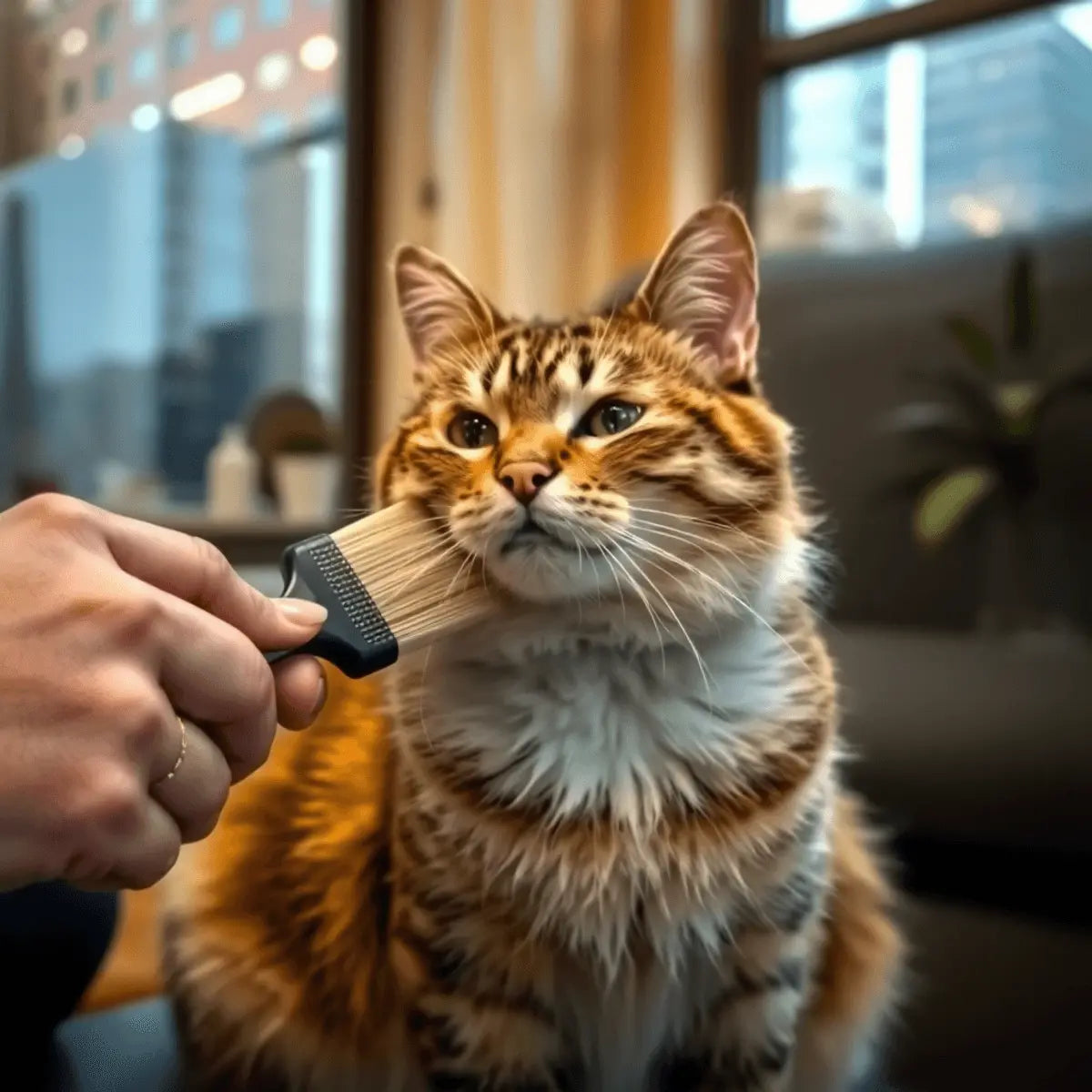Cat Grooming Myths Debunked by Toronto Experts

Cat owners in Toronto constantly seek reliable information to give their pets the healthiest and happiest lives possible. Yet, persistent cat grooming myths often lead well-meaning owners astray, impacting feline comfort and health. With input from respected organizations like the Toronto Humane Society and local experts specializing in feline behaviour, Cat Grooming Myths Debunked by Toronto Experts delivers clarity where misconceptions thrive.
Experts—including Dr. Jacklyn Ellis, a renowned feline behaviour specialist—regularly encounter confusion on how cats experience grooming. These misunderstandings range from the effectiveness of certain grooming tools to broad assumptions about what cats actually enjoy. Local professionals emphasize that no two cats share identical grooming preferences or responses, so a one-size-fits-all approach rarely works.
Understanding the truth behind widespread cat grooming misconceptions equips you to:
- Build trust and reduce stress during grooming sessions
- Identify your cat’s unique needs
- Prevent unnecessary discomfort or health issues
Listening to those who spend their careers working with cats—like staff at the Toronto Humane Society—ensures your care is rooted in science and compassion. Every cat deserves individualized attention backed by expert knowledge, not outdated myths. This guide separates fact from fiction for anyone serious about feline care in Toronto and beyond.
Common Cat Grooming Myths Debunked by Toronto Experts
Myth 1: Cats Enjoy Being Brushed with a Wet Toothbrush Because It Mimics Their Mother’s Tongue
Many people believe that cats enjoy being brushed with a wet toothbrush because it feels like their mother's tongue. This myth likely comes from the idea that the texture and moisture of a toothbrush simulate the sensation of a mother's grooming.
Dr. Jacklyn Ellis from the Toronto Humane Society explains that while some cats may enjoy being brushed with a wet toothbrush, it is not because they recognize it as their mother grooming them. Instead, the pleasure comes from being petted in areas where scent glands are located, such as around the face and neck. These areas are sensitive and pleasurable for many cats when touched.
Cats' reactions to grooming methods can vary significantly based on their individual personalities and past experiences. Some may find the sensation comforting, while others might be indifferent or even resistant to it.
Understanding these nuances helps cat owners provide appropriate care tailored to their pet's preferences and needs. Observing your cat's behavior and adjusting your grooming techniques accordingly can ensure a more enjoyable experience for both you and your feline friend.
For those seeking expert advice on cat grooming, PAWMART's pet grooming services in Toronto could provide valuable insights. They offer a range of services that cater to different pet needs including grooming which takes into consideration individual pet preferences.
Myth 2: All Cats Love Being Brushed Equally
Cat grooming myths Toronto experts often highlight the misconception that all cats enjoy being brushed equally. However, this is far from true. Every cat has its own unique personality and preferences when it comes to grooming.
1. Individuality in Grooming Tolerance
Some cats may find brushing enjoyable, treating it as a bonding experience with their owners. Others might see grooming tools as toys or show complete indifference to the process.
2. Observing Body Language
It's essential to pay attention to your cat's body language during grooming sessions. Look for signs of discomfort or stress such as tail flicking, ear flattening, or attempts to escape. These indicators can help you adjust your approach to ensure a positive experience.
3. Adjusting Techniques
Based on your cat’s feedback, you may need to change brushes, alter the pressure applied, or even break grooming sessions into shorter intervals. This personalized approach will cater to your cat's individual needs and preferences.
Understanding these nuances can make a significant difference in maintaining your cat’s comfort and well-being during grooming sessions.
In addition to grooming, it's also important to consider other aspects of pet care such as diet and playtime. For instance, providing high-quality pet treats can make a significant difference in your cat's happiness and health. Similarly, incorporating raw food into their diet can enhance their overall well-being.
Moreover, engaging your feline friend with suitable pet toys not only keeps them active but also provides mental stimulation. And don't forget about pet accessories, which can enhance their comfort and style while also making grooming easier.
Lastly, considering a pets food topper could be an excellent way to improve the nutritional value and taste of their meals.
Best Practices for Cat Grooming According to Toronto Experts
Feline Body Language: Understanding Your Cat During Grooming Sessions
Understanding feline body language is crucial for safe and effective grooming. Cats communicate their comfort levels through subtle signals, and recognizing these can help you adjust your grooming techniques accordingly.
Signs of discomfort or stress during grooming sessions:
- Ears Flattened: When a cat's ears are laid back flat against its head, it often indicates irritation or stress.
- Tense Body: A stiffened, tense body posture suggests the cat is uncomfortable.
- Tail Flicking or Lashing: Rapid or aggressive tail movements can be a sign of agitation or annoyance.
- Vocalizations: Growling, hissing, or yowling are clear indicators of distress.
- Avoidance Behaviors: Attempts to escape or hide signal that your cat is not enjoying the grooming session.
Adjusting techniques based on a cat’s feedback:
- Pause and Observe: If your cat shows any signs of discomfort, pause immediately. Allow your cat some time to relax before continuing.
- Gentle Approach: Use gentle strokes and avoid putting too much pressure while brushing. This can make the experience more pleasant for your feline friend.
- Short Sessions: Keep grooming sessions brief initially. Gradually increase the duration as your cat becomes more accustomed to being groomed.
- Positive Reinforcement: Reward your cat with treats or affection after each grooming session to create a positive association.
- Safe Environment: Ensure the grooming area is quiet and free from distractions. A calm environment helps reduce stress levels.
Toronto experts emphasize that understanding these body language cues can significantly improve the grooming experience for both you and your pet. By observing and reacting appropriately to your cat’s signals, you can ensure that grooming becomes a comfortable and enjoyable routine.
Essential Supplies for Cat Grooming
To make the grooming process easier and more effective, it's essential to have the right cat supplies. These include high-quality brushes, shampoos, and nail clippers that cater specifically to your feline friend's needs.
Additionally, incorporating cat scratchers into your home can help manage their natural scratching instincts while keeping them entertained.
Finally, don't forget about pet tags which are not only useful for identification but also add a personal touch to your pet's accessories.
Consulting Certified Feline Behavior Trainers for Personalized Advice
For difficult grooming situations or behavioral concerns, seeking guidance from certified feline behavior trainers can be highly beneficial. These experts provide tailored advice that addresses your cat's unique needs and personality.
Benefits of consulting certified trainers:
- Personalized Care: Trainers assess your cat’s specific behaviors and preferences, offering customized grooming techniques that ensure a stress-free experience.
- Behavioral Insights: Understanding the root causes of your cat's grooming aversions can help in developing effective strategies to manage them.
- Safe Practices: Trainers can teach you safe grooming practices that minimize stress and prevent injury, enhancing your cat's overall well-being.
Certified trainers offer invaluable support, making grooming a more positive experience for both you and your feline companion.
Role of Professional Groomers in Supporting Cat Health and Comfort in Toronto
Professional cat groomers in Toronto, such as those at PAWMART, provide specialized services designed for feline comfort and health. Their expert nail clipping and brushing sessions are tailored to each cat’s needs, reducing stress and preventing injury. Trusted by local pet owners, PAWMART emphasizes gentle handling, ensuring every visit is both safe and soothing.
Services like cat bathing and individualized coat care help maintain skin health while minimizing matting or shedding issues. Cats benefit from the skilled touch of groomers trained to recognize subtle signs of discomfort, making routine grooming a positive experience for even the most sensitive pets.
In addition to grooming services, PAWMART also offers a variety of featured products that can enhance your pet's lifestyle. From stylish and comfortable pet clothes to secure and comfortable pet harnesses, PAWMART is a one-stop-shop for all your pet needs. They even provide unique items such as cat wine for a special treat!
Addressing Related Pet Care Myths with Expert Insight from Toronto Groomers
Some pet care myths vary significantly between dogs and cats. For instance, many believe that dog bubble baths are beneficial, yet experts caution against such practices for cats due to their sensitive skin and grooming habits. Toronto groomers highlight that while dogs might enjoy a bubbly cleanse, cats require a more cautious approach to bathing to avoid stress and discomfort.
Expert Pet Care Advice:
- Dog Grooming: Bubble baths can be fun and rejuvenating. However, it's essential to pair this with fresh dog food for overall health.
- Cat Grooming: Gentle, minimal bathing is recommended to maintain comfort.
Understanding these differences ensures better care tailored to your pet's specific needs. It's also important to remember that dog supplies should include comfortable items like dog collars which can make grooming sessions easier and more enjoyable for your furry friend.
Conclusion
Observing your cat's behavior and body language is crucial for effective grooming. Toronto experts emphasize the importance of recognizing signs of discomfort or stress during grooming sessions. By doing so, you can adjust your techniques to ensure a positive experience for your feline friend.
Seeking guidance from certified feline behavior trainers can provide tailored advice for challenging grooming situations and behavioral concerns. Local services like PAWMART, which not only offer specialized grooming services designed to prioritize pet comfort and individualized care but also provide quality pet food and walking equipment that reinforce the importance of professional support in maintaining your cat's health.
Debunking cat myths with informed insights enables you to provide better care for your pets. Understanding the truth behind common grooming misconceptions empowers you to make informed decisions that contribute to your cat’s happiness and well-being.
For optimal health and happiness, always observe your pets carefully and consult experts when needed. Engaging with trusted professionals ensures that you are equipped with the best practices for feline care.
Compartir
